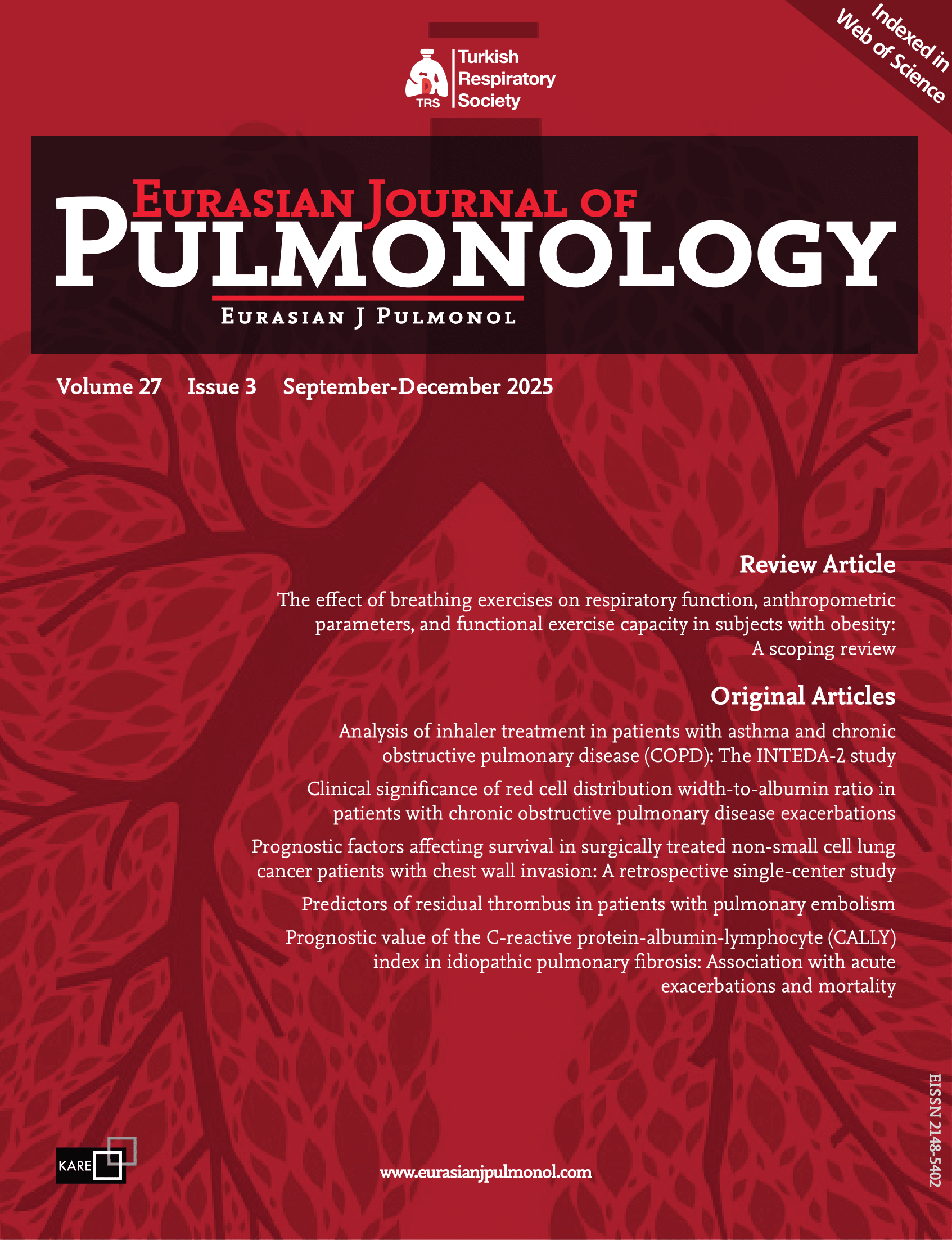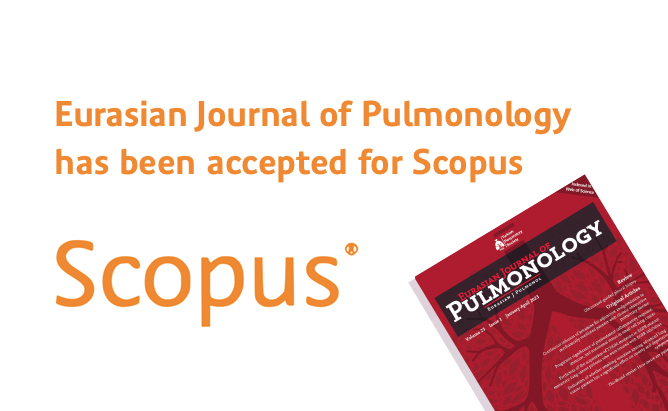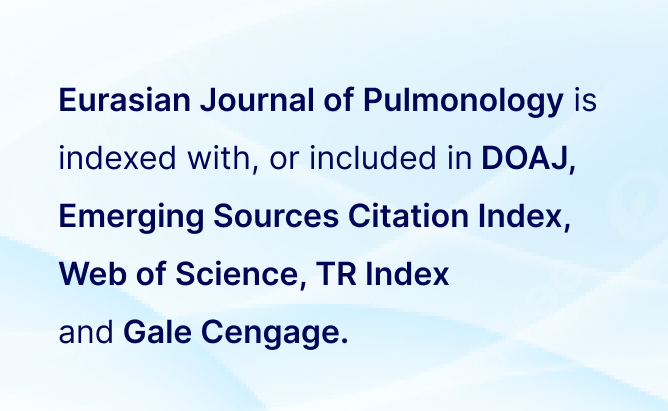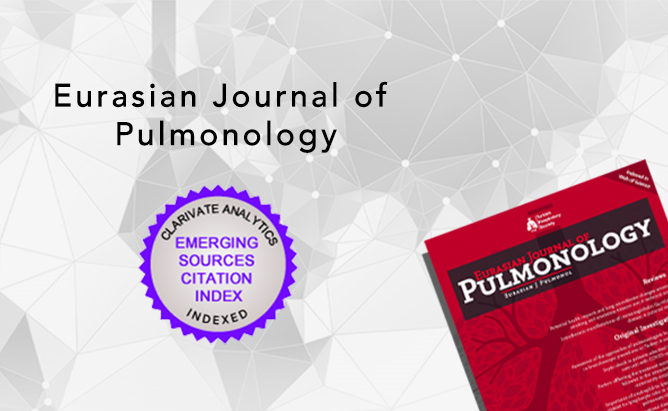2Department of Pulmonology, Dr. Mustafa Kalemli Tavsanlı State Hospital, Kütahya, Türkiye
3Department of Pulmonology, Sultanbeyli State Hospital, İstanbul, Türkiye
Abstract
Background and Aim: Chronic obstructive pulmonary disease is a systemic condition. Oxidative stress and air trapping can lead to variations in diaphragm mobility and thickness. Consequently, assessing diaphragm function in these patients is of significant importance. The aim of this study is to evaluate diaphragm thickness and mobility using ultrasonography in COPD patients and to determine their relationship with clinical classification and exacerbation frequency.
Methods: This study is a single-center, prospective investigation. Diaphragm excursion, diaphragm thickness, inspiratory and expiratory durations, contraction speed, and thickening fraction were assessed using ultrasound. Spirometry and diffusing capacity for carbon monoxide were performed, and lung volumes and capacities were calculated. Patients were followed for three months to record the number and severity of exacerbations and hospitalizations. Diaphragm parameters were compared with clinical and functional tests to examine their impact on COPD classification and exacerbation.
Results: A total of 81 patients, 70 of whom were male, were included in the study. Diaphragm excursion during deep inspiration was found to correlate with classification according to FEV1 (r = -0.38, p < 0.001). Significant correlations were also observed between diaphragm excursion during deep inspiration and RV (%; L) (r = -0.39, p < 0.001; r = -0.37, p < 0.001) and RV/TLC (r = -0.52, p < 0.01). Diaphragm excursion during deep inspiration significantly decreased as the GOLD stage increased (p = 0.007). No significant difference was found between diaphragm thickness and either GOLD classification or FEV1 classification. During the three-month follow-up, patients with lower diaphragm excursion during deep inspiration experienced a significantly higher number of exacerbations (p = 0.012).
Conclusion: Our study demonstrated that diaphragm excursion during deep inspiration influences GOLD classification, FEV1 classification, and the incidence of acute exacerbations. Our findings suggest that diaphragm dysfunction is more strongly associated with reduced mobility than with reduced thickness. Diaphragm excursion during deep inspiration has a significant impact on GOLD classification, FEV1 classification, and acute exacerbations. Although diaphragmatic excursion was linked to exacerbation risk in univariate analysis, it did not remain an independent predictor after adjustment. Further long-term studies are needed to clarify its prognostic value.





 Saibe Fulya Elmastaş Akkuş1
Saibe Fulya Elmastaş Akkuş1 



